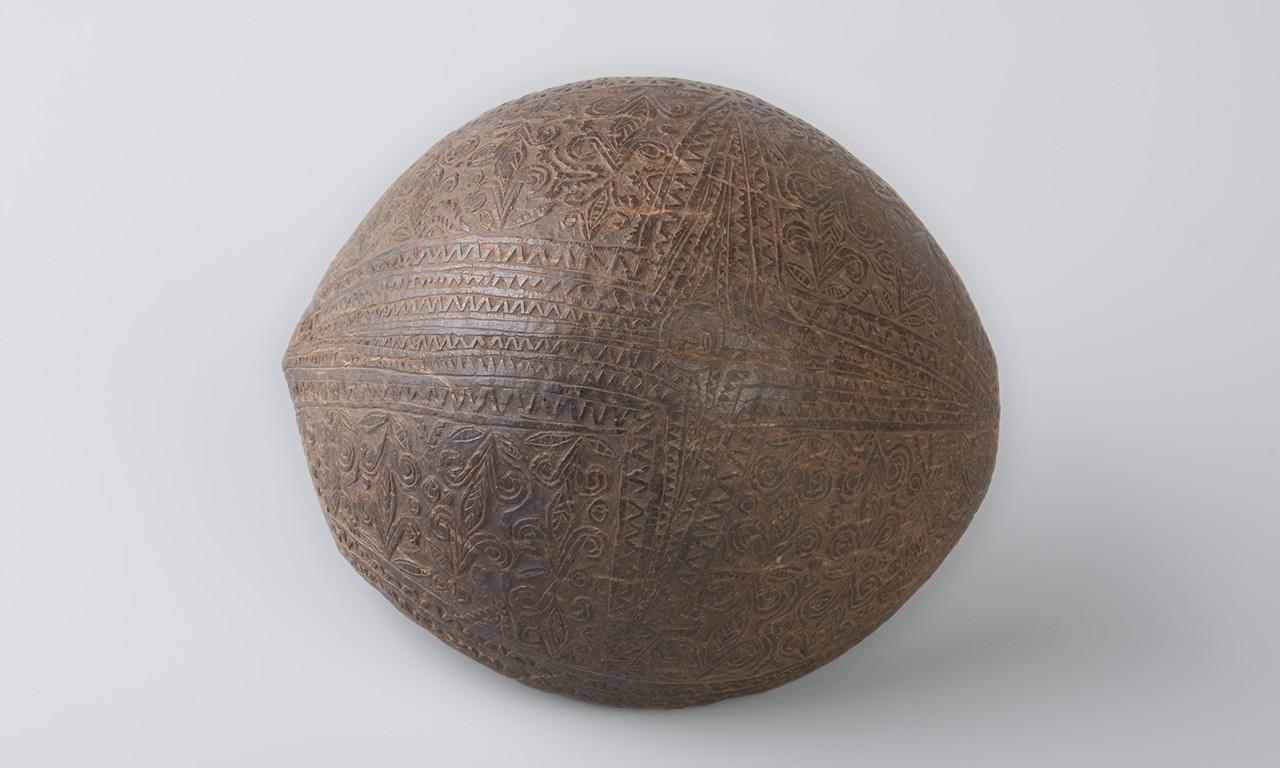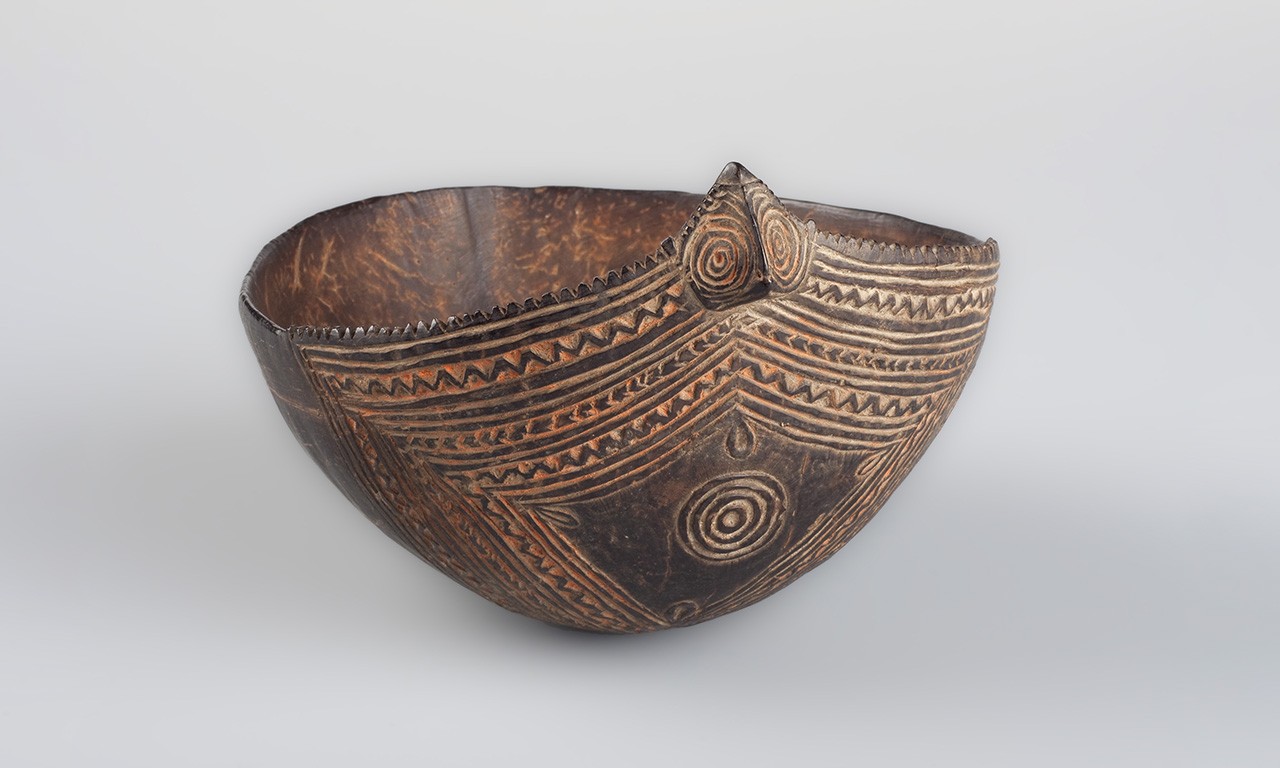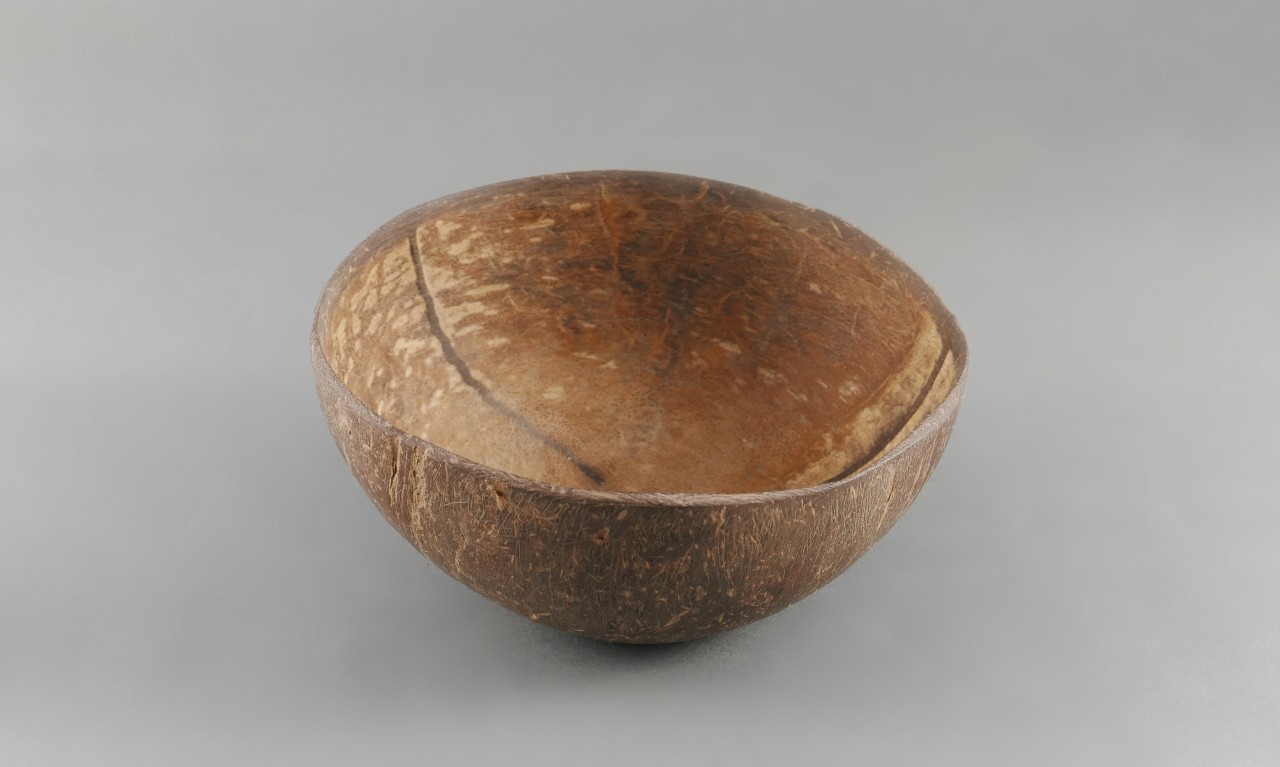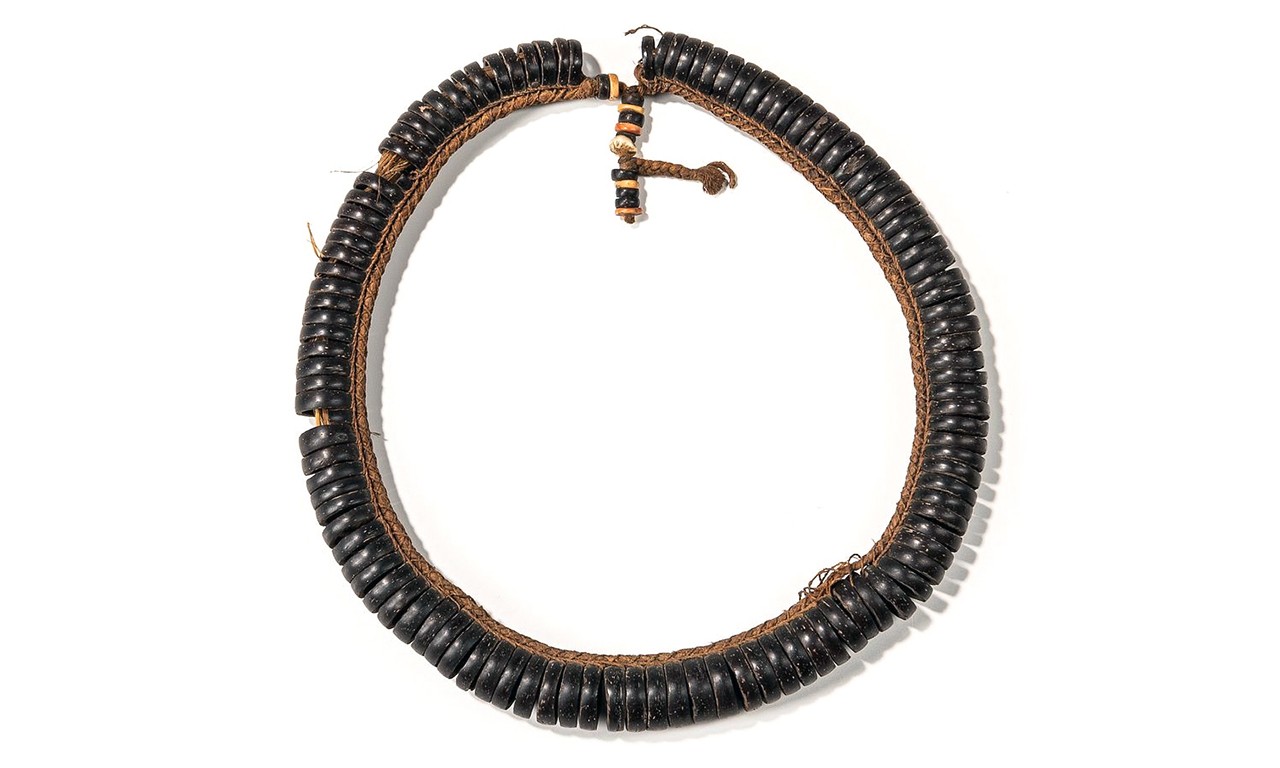2002 North Main Street
Santa Ana, California 92706
TEL: 714.567.3600
Carvings on a Half Shell: Coconut Artifacts of Oceania
 |
| Detail of 2017.10.39 Anonymous Gift |
First There Was Orb
If you have never taken that extra moment’s pause to ponder the nature of coconuts, consider this post an invitation to do just that. The palm-grown orbs are surprisingly versatile, and their appearance may just drupe you into thinking that they are something they are not. That is not a typo, coconuts can roughly be classified as fruits, seeds, and nuts, but in technical terms they are drupes: their seed is encased in hardened inner and outer casings with a fleshy layer between. Key to the subject at hand, coconut palms remain staples of islands throughout Oceania today. The water within is potable and a great source of nutrition, the flesh can be eaten or sun-dried and squeezed out to make oil, and the sturdy shell is immensely adaptable when creating objects. This post explores several coconut shell tools and ornaments used in Oceania.
 |
 |
| Soup Bowl, 20th Century Abelam people; Maprik area, East Sepik Province, Papua New Guinea, Melanesia Coconut shell and paint; 6 x 5 1/2 x 3 1/2 in. F75.5.4 Gift of Herbert & Nancy Baker |
Soup Bowl, mid 20th Century Abelam culture; Maprik-Wosera area, East Sepik Province, Papua New Guinea, Melanesia Coconut shell; 3 5/8 × 5 1/2 × 5 in. 2017.10.39 Anonymous Gift |
Nature’s Bowl-ing Balls
The simplest use of the coconut was as a bowl, achieved rather easily by husking a coconut, splitting it in two and removing the insides with a grater. The fine carvings seen in these two examples from the Abelam culture of the Wosera-Maprik area demonstrate though, that these bowls were anything but plain. These were used by men to drink kangu, a powerful yam soup, which was consumed on ceremonial occasions. As we will see with other objects in this post the carvings were often reflective of spirits, in this case nggwal ancestral spirits. The pigment is then placed over the pattern surface to give dimension and contrast to the design.
 |
 |
| Charm (Marupai) in Bag, early 20th century Elema people; Kerema area, Gulf Province, Papua New Guinea, New Guinea, Melanesia, Oceania Dwarf coconut and white lime; 4 x 1 1/4 x 1 in. 2011.14.2a,b Bowers Museum Purchase |
Coconut Shell Whistle, 20th Century Papua New Guinea, Melanesia Coconut shell; 5 3/8 × 1 3/4 × 1 1/2 in. 2014.26.1 Gift of Anne and Long Shung Shih |
Palm Reader
While spherically shaped coconuts are ideal for bowls, Papuan objects carved from dwarf coconuts take advantage of the smaller drupes’ oblong shape. The marupai charm was made by the Elema culture of the Gulf of Papua. These amulets were used as protective charms and by sorcerers to cast magic. The carvings on the front of this marupai are reminiscent of the spirits found on the hohao or gope boards. The sides of the charm appear to be zoomorphic, almost pig-like in appearance. It is rare for one of these charms to have been kept with the tightly woven string bag necklace that men used to carry them.
Back in the East Sepik Province, the same type of coconut is used to make whistles. In fact, along with bamboo and clay coconuts are among the most common mediums for whistles. Traditionally, these wind instruments featured animal shapes and designs. They could have been used in animistic and clan specific ceremonies, as well as a means of signaling others while hunting.
 |
| Kava Cup (Bilo Ni Yaqona), 20th Century Fiji, Melanesia Coconut Shell; 3 × 5 × 4 3/4 in. 2019.7.7 Anonymous Gift |
Copra Cuppers
On the Fijian archipelago, halved coconut shells were not just used to eat food like they were in Papua New Guinea. They were traditionally used as cups for drinking kava, a drink made from the root of a species of pepper tree which is known to have sedative and euphoriant properties. These cups are called bilo ni yaqona, with yaqona being the word in Fijian vernacular for kava. Depending on the size of the gathering for which it was being prepared—yaqona might be shared with a friend or a key part of a village-wide feast—the drink would be prepared in bowl of different sizes and these cups would be used in a manner not so dissimilar to how one might dip a cup into a punch bowl.
 |
| Necklace, 19th Century Chuuk Islands, Eastern Caroline Islands, Federated States of Micronesia Coconut, shell and fiber 2021.3.1 Bowers Museum Purchase |
Drupe Loops
We end this post by featuring a new acquisition to the Bowers Museum’s collections, a necklace from the Chuuk Islands in Micronesia’s Eastern Caroline Islands. Micronesia is defined in part by its relatively harsh conditions, limited resources, and a long history of facing intense weather conditions. The result is that less time was spent decorating functional objects. Instead carvers relied on clean and minimalist lines to create aesthetically pleasing objects. Ethnographic photographs from the Chuuk Islands dating back to the 19th century show men wearing multiple strings of these necklaces. The necklaces could be found on multiple island chains throughout Micronesia including Palau and the Marshall Islands as well. In Palau, the coconut rings were made by cleaning and shaping coconut shells into discs and then drilling into them with a pump drill. The polished result can be seen to be as dazzling as any metal chain.
Text and images may be under copyright. Please contact Collection Department for permission to use. References are available on request. Information subject to change upon further research.

Comments